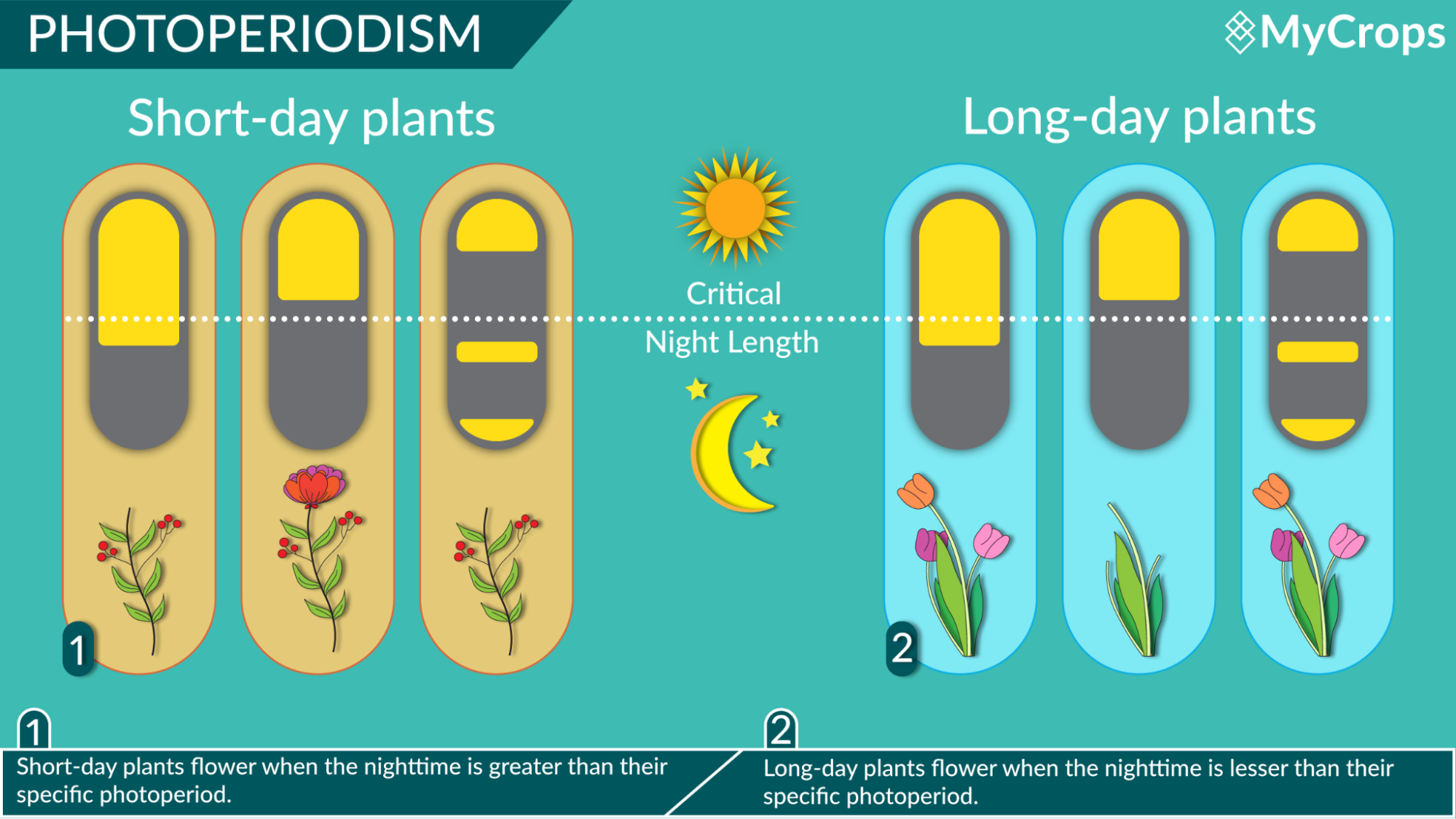Photoperiod is an environmental signal linked to several seasonal and developmental processes in plants, which depend on daylight duration. The strong response to photoperiod has evolved because day length is a reliable signal; the days get longer and shorter throughout the year, thus providing a good indication of seasonality. In this sense, photoperiod contrasts with other signals such as temperature or rainfall, which can be unexpected and change dramatically from season to season or even from day to day.
Photoperiod, as a result, serves as an inner clock for plants. Examples of different responses in plants that fall under photoperiodic control include: determining when to flower (which also affects pollination), tuberization, and bud set.
Long-Day Plants (LD): Flowering occurs when night duration is shorter than their specific photoperiod (more than ~12 hours of daylight). Lettuce, spinach, and potatoes are examples of long-day plants. These all bloom when the days are long, during the summer.
Short Day Plants (SD): Short-day plants require a long period of darkness (less than ~12 hours of daylight). Rice, soybean, and onion are examples of common short-day plants. These plants flower during the spring and fall, when daylight is shorter.
Day-Neutral Plants (DN): Day-neutral plants do not initiate flowering based on photoperiods and form flowers regardless of day length. Tomatoes, cucumbers, and corn are day-neutral plants. Flowering usually depends on their physiological stage, age, or other environmental factors.

It is important to remember that nature is not black and white. All plants are on the scale of long to short day, with neutral plants in between. This explains why plants continue to flower almost year-round.
Growing crops in a controlled environment allows you to manipulate photoperiods. For example, by providing additional lighting hours you can promote flowering in long-day plants and restrain their vegetative growth. Adding artificial light helps inhibit flowering in short-day plants and increases their vegetative growth. To create short-day conditions, you can use dark curtains or black plastic covers in the greenhouse, ensuring that light doesn't penetrate.
Knowing the photoperiodic response of different greenhouse crops allows you to:
2025 MyCrops Technologies Ltd. - All Rights Reserved.